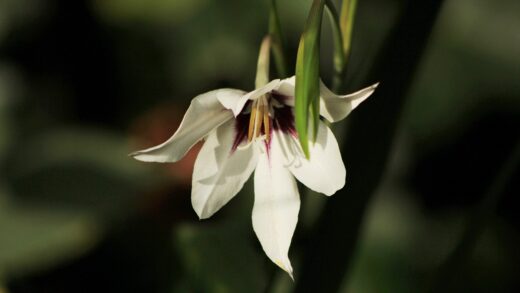Sunlight is the fundamental source of energy for nearly all plant life, and for garlic, it is a critical ingredient for converting a small planted clove into a large, robust bulb. Garlic’s demand for light is high; it is a full-sun crop that requires long hours of direct, unobstructed sunlight to fuel the process of photosynthesis. The energy captured from sunlight by the plant’s green leaves is what powers the development of a strong root system, a vigorous vegetative canopy, and most importantly, the formation and swelling of the underground bulb. Understanding and providing for garlic’s specific light requirements is therefore not just beneficial but essential for achieving a successful and bountiful harvest.
The relationship between light and garlic yield is direct and unambiguous: more sunlight translates to larger bulbs. When a garlic plant receives ample light, its leaves can work at maximum efficiency, producing the sugars and carbohydrates that are later translocated and stored in the bulb. In contrast, a plant grown in partial shade will have a reduced photosynthetic rate. This energy deficit means the plant will be smaller overall, with thinner leaves and a less developed root system, and will ultimately produce a significantly smaller bulb, if it manages to form one at all.
This need for full sun dictates the ideal placement of a garlic patch within a garden or field. The chosen site should be an open area that is free from the shadows cast by buildings, trees, fences, or even taller neighboring crops. It is important to consider the path of the sun throughout the day and across the seasons. A location that is sunny in the early morning but shaded in the afternoon is not ideal. For optimal results, the site should receive a minimum of six to eight hours of direct sunlight each day throughout the spring and early summer growing season.
Furthermore, proper spacing between garlic plants is a crucial aspect of managing light requirements. Planting cloves too close together creates a dense canopy of leaves where the plants begin to shade one another. This self-shading limits the amount of light that can reach the lower leaves, reducing the overall photosynthetic capacity of each plant. Adhering to recommended spacing guidelines—typically four to six inches between plants—ensures that each plant has adequate access to sunlight, promoting uniform growth and maximizing the potential size of every bulb in the crop.
The role of photosynthesis in bulb development
Photosynthesis is the biochemical process at the heart of garlic’s growth and is entirely dependent on light. Using chlorophyll, the green pigment in its leaves, the garlic plant captures light energy and uses it to convert carbon dioxide from the atmosphere and water from the soil into glucose (sugar). This glucose serves as the primary energy source for all of the plant’s metabolic functions, including cell division, root growth, and leaf production. It is the fuel that drives the entire system.
During the spring, when the garlic plant is in its vegetative growth phase, the energy produced through photosynthesis is primarily used to build a large and healthy plant structure. The plant focuses on creating a robust canopy of leaves, as these leaves are the “solar panels” that collect the light. A larger number of bigger, healthier leaves means a greater total surface area for photosynthesis, which in turn means a higher potential for energy production. This is why ensuring the plant has everything it needs during this phase—light, water, and nutrients—is so critical.
As the days lengthen in late spring and early summer, a physiological shift occurs within the garlic plant, triggered by the increasing day length. The plant begins the process of bulbing, and the primary destination for the energy produced by the leaves changes. Instead of being used to create more foliage, the sugars are now transported down the stem and stored in the developing bulb at the base of the plant. The bulb acts as a storage organ, accumulating these energy reserves to sustain the plant through a future period of dormancy.
The final size of the harvested garlic bulb is therefore a direct result of the total amount of energy the leaves were able to produce and store. A plant that has enjoyed long hours of bright, direct sunlight throughout the growing season will have manufactured a surplus of energy, resulting in a large, dense bulb packed with sizable cloves. Conversely, a light-deprived plant will have produced only enough energy for its basic survival, with little left over to store, resulting in a small and disappointing bulb.
Ideal location and site selection
Selecting the ideal location for your garlic patch is one of the most important decisions you will make for your crop. The primary consideration must be sunlight exposure. Before planting, take the time to observe your potential garden sites throughout the day to determine which areas receive the most direct sun. You are looking for a spot that gets a minimum of six, and preferably eight or more, hours of uninterrupted sunlight daily. Remember to account for the lower angle of the sun in spring compared to the height of summer when making your assessment.
Avoid areas that are subject to shading from any source. This includes the north side of buildings, fences, or walls, as well as locations under or near large trees and shrubs. The shade cast by a deciduous tree may not seem like a problem in the fall when you plant, but its emerging leaves in the spring can significantly reduce the amount of light reaching your garlic during its most critical growth period. Even the shade from taller crops, like pole beans or corn planted to the south or west of the garlic, can be detrimental.
In addition to sunlight, the chosen site should have excellent soil drainage. Garlic roots and bulbs are highly susceptible to rot if they sit in waterlogged soil. If your sunniest location has heavy clay soil or tends to be wet, consider building a raised bed. A raised bed, filled with a high-quality mix of loam and compost, will elevate the root zone, ensuring that excess water drains away freely while still providing the full-sun exposure the plants need to thrive.
Finally, consider the principle of crop rotation in your site selection. To prevent the buildup of soil-borne diseases that can affect the allium family, you should not plant garlic in the same spot where garlic, onions, leeks, or shallots have been grown in the last three to four years. Choosing a sunny location with good drainage that has recently hosted unrelated crops, such as legumes, brassicas, or cucurbits, will give your garlic the best possible start in a healthy, disease-free environment.
The effect of day length on garlic
Garlic is a long-day plant, which means that the increasing day length (photoperiod) in the spring and summer is the primary environmental cue that triggers it to stop forming leaves and start forming a bulb. This photoperiodic response is a crucial aspect of its life cycle. When the days reach a certain critical length, a hormonal signal is sent from the leaves down to the base of the plant, initiating the bulbing process. This is why timing the planting correctly is so important; the plant needs to have developed a sufficiently large vegetative structure before this trigger occurs.
Different varieties of garlic have different sensitivities to day length. Softneck varieties, which originated in more equatorial latitudes, generally have a shorter critical day length requirement and will begin to form bulbs earlier in the season. Hardneck varieties, which evolved in more northern latitudes with more dramatic seasonal changes in day length, typically require longer days to initiate bulbing. This is one of the key factors that determines which types of garlic are best adapted to different geographic regions.
The interplay between planting time, day length, and temperature is what governs the development of the garlic plant. When planted in the fall, the clove uses the short days of autumn and winter to establish its root system. As day length and temperatures increase in the spring, the plant focuses on producing a large flush of leaves. Once the days reach the critical length for that specific variety, bulbing is initiated, and the energy from those leaves is redirected to swelling the bulb until the plant reaches maturity.
This sensitivity to day length has practical implications for growers. For instance, planting a northern-adapted hardneck variety in a southern region with shorter summer days may result in the plant never receiving the proper signal to bulb, leading to crop failure. Conversely, planting a southern-adapted softneck in the far north might cause it to bulb prematurely, before the plant has grown large enough to support the development of a sizable bulb. Therefore, selecting a garlic variety that is well-suited to the day length patterns of your specific latitude is a key determinant of success.
Managing shade and competition
Even in a well-chosen sunny location, shade and competition can emerge as issues that need to be managed during the growing season. The most common source of competition for light is from weeds. Weeds can grow quickly and can easily overtop and shade out the relatively short garlic plants, robbing them of the sunlight they need. A consistent and thorough weed management strategy, preferably using a thick layer of mulch supplemented with regular hand-pulling, is essential to ensure the garlic plants are the only ones capturing the sun’s energy in their designated space.
Competition can also come from the garlic plants themselves if they are not spaced properly. Planting cloves too closely together leads to an overcrowded bed where the leaves of adjacent plants overlap and compete for light. This mutual shading reduces the efficiency of the entire patch and results in smaller, less uniform bulbs. Following the recommended spacing of four to six inches between plants in the row and about twelve inches between rows provides each plant with its own “window” to the sun, allowing it to reach its full potential.
In some garden designs, interplanting or companion planting is practiced. While this can have benefits, it must be done thoughtfully with respect to garlic’s light requirements. Any companion plants grown near garlic should be low-growing species that will not cast a shadow on the garlic leaves. Planting tall crops like corn, sunflowers, or climbing beans to the south or west of the garlic patch is a mistake that should be avoided, as they will block the crucial afternoon sun during the peak of the growing season.
If you find that a previously sunny spot has become shadier over time, perhaps due to the growth of a nearby tree, you may need to take corrective action. This could involve pruning the lower limbs of the tree to allow more sunlight to reach the ground level. In situations where the shade is unavoidable, you may have to accept a diminished harvest from that location or consider moving your garlic bed to a new, sunnier spot in your garden for the following season. Prioritizing light access is non-negotiable for high-quality garlic production.















